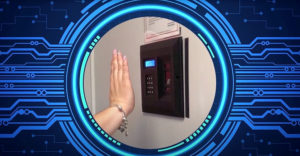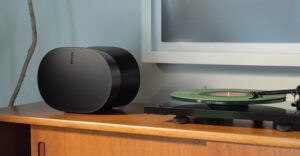The market for home security systems continues to grow despite concerns about false alerts, according to a new report from Parks Associates.
Security system ownership is at an all-time high in multiple sectors, the report noted, with more than a third of U.S. broadband households (36%) having home security systems and 41% of multi-dwelling unit managers installing systems in their common areas and parking garages.
“The market was stagnant, hovering around 20% penetration for decades,” observed Yaniv Amir, president of Essence USA, which is part of the Essence Group, a global technology company.
“In the last five to seven years, we’ve seen a significant increase because security has become part of home automation,” he told TechNewsWorld. “That jumped penetration to the mid-thirties.”
The past several years have been good for selling systems into the small and medium business market, the report added. Along with the Covid-19 pandemic, it explained that the spring and summer of 2020 were characterized by social and political unrest, resulting in heightened concerns about safety and security.
False Alert Problem
Despite promising growth, accurate detection of security threats remains a problem, according to the report. False alarms threaten user satisfaction with their systems, it maintained, with about two out of three security system owners paying a fine for a false alarm, with an average cost of almost $150.
“In the U.S., false alarms are a really big deal,” Amir said. “It causes many people to not arm their alarm systems, rendering them non-functioning.”
He noted that one way to avoid false alarms is to use artificial intelligence to filter out triggering an alarm from a single detector. “If you have multiple sensors, an intruder is likely to trip more than one sensor, so an alert from a single sensor is likely a false alert,” he explained.
“More advanced systems can use facial recognition to determine if a face belongs to someone who lives in the house,” he added. “More advanced technologies could also identify unusual behavior — if the owner of house were being attacked, for example.”
Parks Senior Analyst Chris White told TechNewsWorld that effective monitoring is the best way to avoid false alarms. In addition, he continued, new video and audio analytics will help.
“Device manufacturers are increasingly using AI powered by the cloud or a more powerful edge to analyze video and audio data collected by cameras and microphones around the residence and verify that the event detected is a threat rather than a pet running across the porch or a branch blowing in a strong breeze,” he said.
AI to the Rescue
While agreeing that better analytics will help eliminate false alerts, Mark N. Vena, president and principal analyst at SmartTechResearch in San Jose, Calif. maintained that AI will ultimately do the best job of mitigating false alerts. “It will allow cameras to ‘learn’ about a homeowner’s specific environment,” he explained.
“This technology could get integrated at the device level, but it could also surface in Wi-Fi 6E or Wi-Fi 7E routers that can contribute by reducing latency with dramatically improved bandwidth,” he said.
Vendors can do things to improve smart security systems, but the responsibility lies with the user to configure the system appropriately, added IDC Senior Analyst Adam Wright.
“That’s one of the drawbacks of adopting a do-it-yourself approach to building out a home security system — installation, setup, and configuration of all of the required rules and scenes can be cumbersome,” he told TechNewsWorld.
“Professional installers have an advantage in that they can customize the security solution to the home’s requirements and help the user set up the correct configuration to help ensure the system works as intended and to minimize false alerts and other disruptions,” he said.
Integration Headaches
False alerts aren’t the only problem plaguing home security systems. “Reliable connectivity is one big limitation,” Wright contended. “Frequently the devices connected to the network go unresponsive or offline, and troubleshooting isn’t always straightforward or easy.”
“Moreover,” he added, “integrations with third-party devices continue to be problematic. For example, pulling up a video feed on a smart display can be met with numerous errors and delays that can interrupt the experience.”
Vena agreed that it’s difficult to integrate devices from multiple brands with many current home security systems.
“Some of the better home security systems, though not all, do a reasonable job playing an agnostic role integrating devices from different manufacturers,” he said, “but user frustration can be high when they determine a device that they’ve purchased doesn’t work in the home security system’s ecosystem or integrate with their master control app.”
He sees security systems in the future departing from the use of video. “I’m most optimistic about ‘Wi-Fi sensing’ technology that allows every Wi-Fi device in your home to use Wi-Fi signals to determine fall detection, break-ins, and so forth,” he observed.
“Acoustic sensing technology, too, can help detect the breaking of glass or screams that could be used to send an alert,” he added. “These latter capabilities also have privacy benefits as they don’t use video to make these determinations, something that is attractive as an indoor sensor.”
DIY Monitoring
The Parks report also noted that a critical new factor in the security space is the rise in self-monitored security systems. These self-monitored systems send alerts to the users’ phones for a lower monthly fee.
“Self-monitoring has the benefit of reduced monthly cost, but it also requires the homeowner to act on alerts and contact authorities if a break-in or intruder is detected,” Vena said. “This is a significant disadvantage, as most people don’t want to be, or can’t be, monitors of their homes.”
Wright added that one of the biggest advantages of self-monitoring is the peace of mind that the system won’t falsely trigger a response from emergency services, which can be disruptive or costly.
“The disadvantage, however, is that if an alert or alarm goes undetected,” he continued. “For example, if the user isn’t near their phone all the time, or there’s a connectivity issue with the phone that doesn’t receive an alert. Then the event will go unanswered which could mean emergency services aren’t dispatched in time.”
According to the report, 33% of self-monitored security system owners told Parks researchers that they intended to switch to a professional monitoring service because they weren’t available when a security event occurred, and they could not take proper action.


























































